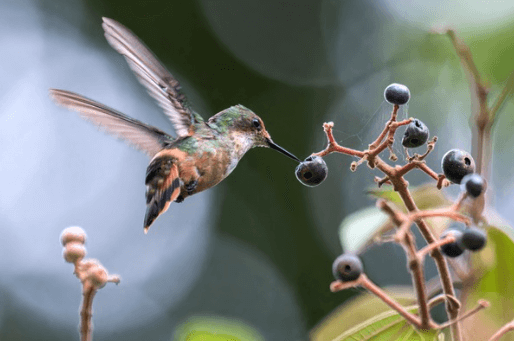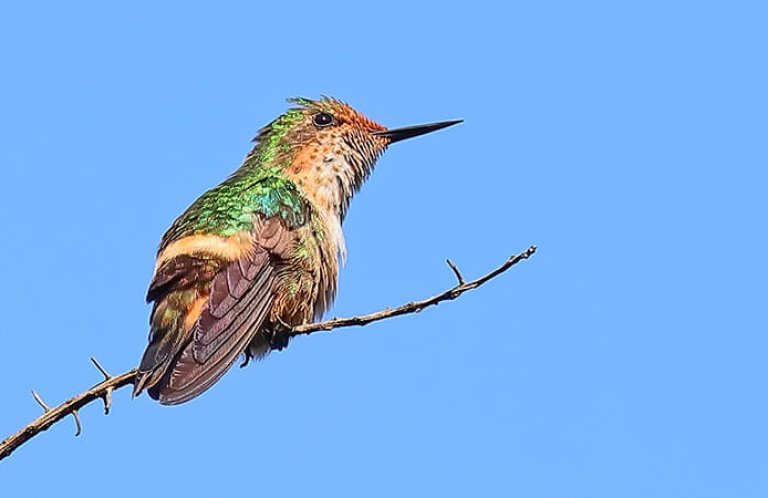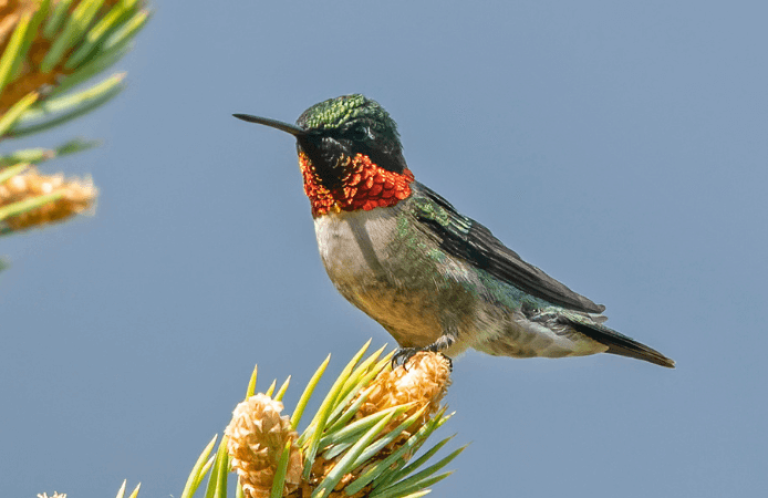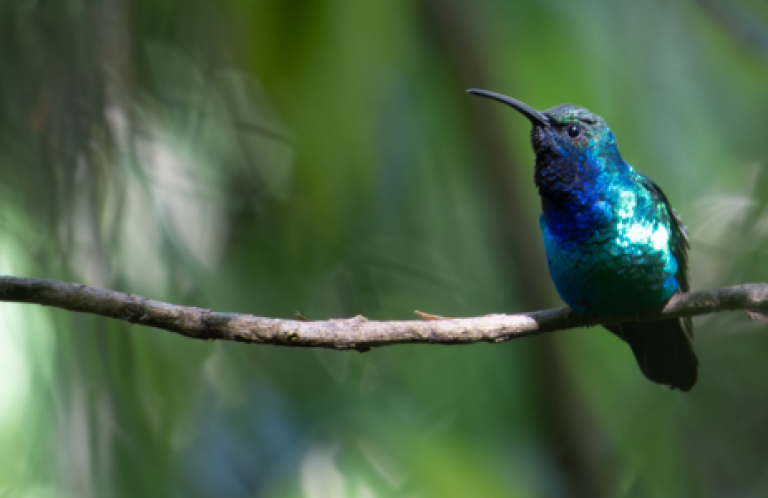Almost 22,000 Acres Protected for the Tiny Short-crested Coquette

One of the rarest and most spectacular hummingbirds in Mexico, found only in a small area of mountainous woodlands, is the focus of an ambitious conservation project that includes American Bird Conservancy (ABC), the Universidad Autónoma de Guerrero (Autonomous University of Guerrero), and local communities, as well as Mexico's National Commission of Protected Natural Areas (Comisión Nacional de Áreas Naturales Protegidas, or CONANP).
Six protected areas, totaling nearly 22,000 acres in the southern state of Guerrero, are being established to help prevent the extinction of the tiny Short-crested Coquette. The Critically Endangered species has an estimated population of fewer than 1,000 adults.
Four of the protected areas were declared in 2023 — the first ever created for the species — and two more are expected to be created this year. Ranging in size from about 2,800 acres to nearly 5,000, the conservation reserves provide a network of preserved forest habitat. The properties are administered by the ejidos (communally owned and farmed lands) and local communities and are included in Mexico's Protected Areas Network coordinated by CONANP.
For about five years, ABC has been working on the coquette project with ecologist Roberto Carlos Almazán-Núñez, the coordinator of research and conservation for the bird at the Autonomous University of Guerrero.

The Short-crested is the northernmost of the 11 coquette species in the genus Lophornis, and it is by far the most endangered. The majority of sightings occur along a road dotted by villages in the Sierra de Atoyac, where the coquette inhabits an area of about 44 square miles between 2,300 and 4,900 feet elevation.
Habitat loss is the main driver behind the species' decline. About one-fourth of its woodland habitat in the Sierra de Atoyac has been lost to agriculture and livestock uses; what remains is threatened by forest fires and climate change.
“We needed to take action to reduce threats to this hummingbird,” explained Almazán-Núñez. “To ensure greater success, we partnered with local communities, taught them to monitor wildlife, and involved them in government programs that provide financial support for the sustainability of the new protected areas. Currently, there is great interest from other communities where the coquette occurs to join efforts to protect their forests, which began with this project developed in coordination with ABC.”
Almazán-Núñez partners with local residents to help them manage the new protected areas. In addition to wildlife monitoring, community members work to prevent forest fires, place camera traps to watch the movements of wild cats and other mammals, manage native conifer trees, and complete other tasks.
“It is wonderful to see a small project, started by ABC to better understand the basic ecology of this Critically Endangered species, grow into a community-based conservation program,” said Amy Upgren, ABC's Director of International Programs. “Each of the six communities voted to set aside part of their communal lands to create reserves for the coquette and other species, and they are now managing these reserves to ensure their continued conservation.”
Almazán-Núñez and Upgren discussed the conservation of the coquette during this May 2024 ABC webinar. In addition, the university recently produced a 20-minute documentary about the bird and the Sierra de Atoyac:
ABC thanks Patricia Davidson, the Marshall-Reynolds Foundation, the Weeden Foundation, George Powell, the Estate of William Belton, the Estate of Mary Janvrin, Lawrence Thompson, and Dr. Janice D. Barry for their support of work on behalf of the coquette.
This article originally appeared in the Spring 2024 issue of Bird Conservation. Become a member to receive ABC's magazine, published three times per year, and enjoy other benefits like exclusive members-only events and discounts for bird-friendly coffee from our partners at Birds & Beans Coffee.


















































